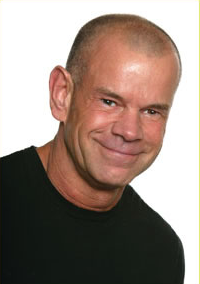Sign of the Times by Carol Phillips
Want to create attention in your retail zone without remodeling? The cheapest and most effective way to generate additional retail sales is to use in-salon signs. Good signs will attract attention to your products, increase sales on the spot, educate the client by making it easier to select products. Signs will give your salon the competitive edge. You can modify selection, pricing and features instantly.
5 Key Tips for Producing Signs That Sell
1. Handmade Signs vs. Machine Made Signs
Salon signs should always be machine made. Hand printed signs look elementary to the consumer. My only exception is when I design a bridal display and use calligraphy to simulate wedding invitations. You can produce machine made signs from several sources.
If you are computer friendly, you already have access to professional looking signs. Some of the new publishing programs make signing a snap. If you’re not artistically inclined even on a computer, don’t fret. Look in your local yellow pages under desk top publishing. There should be an abundance of professionals who can design your signs. Some of the quick copy places have added desk top publishing in their stores.
Check your local college’s computer graphics department for someone to help produce your signs. College kids always need extra money. I have recently used a franchise sign company that makes instant signs and charges super prices.
2. Size It Up
The ideal sign should be no smaller than 5 1/2″ by 7″. As those 76 million Baby Boomers age the eyesight has a tendency to weaken. Avoid small shelf clip signs, they can be too small for the clients to read. Blow-up your message to poster size and place it at the reception desk and service area.
3. lnfo Crazy
When you are making a sign include 4 key items: Name of brand – Especially if the product line you are featuring has been spending big bucks on national advertising. Play off the name of the company with their advertising.
Price – Put the price of the item featured on the sign. If the item will save the client money by buying from your salon, tell them. Put you competitor’s price on the sign. Store X is charging $5.95. Hot Locks has the same item for $5.25.
Savings– Highlight in the sign any savings the shopper will benefit from: 10% Off or Save $1.25. I am a big fan of discounting products over services. Take advantage of your distributor’s monthly specials to give your clients’ savings.
Feature Plus Benefit – On your sign tell the client why this particular item would be beneficial for them by highlighting the unique feature. Avoid the trap of “it’s a great shampoo,” the client needs more information to make a decision. Let your sign tell the story. Look in your product guide for a strong statement tagging the feature/benefit of the product.
4. Getting Framed
Complete the image by finishing off the sign with the appropriate frame. Display it in the salon in a Lucite holder, a laminated frame or a matte frame for extra attention.
5. Financial Times
Good signs do pay off. One market study showed that scores featuring machine made signs sold over 200% more merchandise compared to stores with no signs. Signing in the salon is a 24 hour a day duty. Signs will talk about your product and can be thought of as a way to add sales staff at a fraction of long-term cost.
For more information on Carol’s books, seminars, please contact her: 760.429.7772




